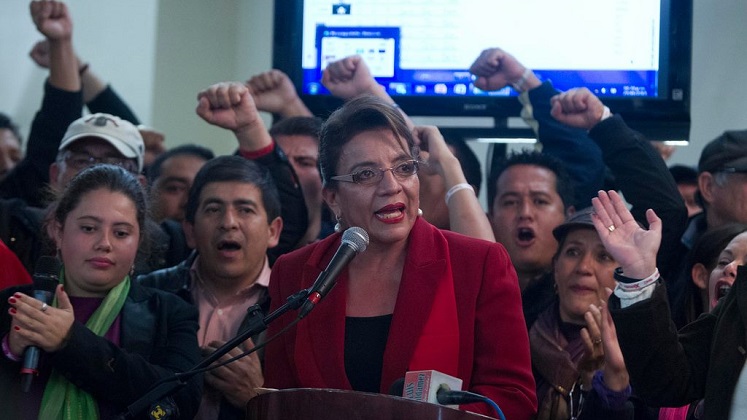Gender-responsive budgeting (GRB) aims to incorporate a gender perspective into budgetary decisions, but its effectiveness varies. Ecuador’s celebrated GRB system led to increased awareness but faced resistance from some officials, Juan Pablo Martínez Guzmán (University of Maryland) found.
Gender-responsive budgeting (GRB) is a type of reform that aims to introduce a gendered perspective into fiscal decisions. While GRB dates back to the 1980s, the past two decades have seen an exponential proliferation of these reforms, reaching over 80 countries worldwide. The expansion of GRB has been particularly significant in Latin America, where at least 18 countries have initiated reforms.
While there is no specific template for GRB, there are certain tools that are commonly used in most countries. One example is the use of gender-oriented impact assessments. These assessments aim to determine whether government interventions have a differentiated effect on men and women, either ex-post or ex-ante. Another example is the use of gender-disaggregated budget statements, which seek to enhance transparency by detailing how much resources have been allocated to programs that can potentially reduce gender gaps and/or disaggregate the total beneficiaries of government interventions by gender.
Can Gender-responsive budgeting influence policymaking?
Ultimately, the goal is for GRB to influence policymaking in a way that leads to a more equitable society. This influence can change policy interventions by evidencing how specific program characteristics can lead to inequitable outcomes or by helping women’s rights activists’ pressure for reforms through increased gender-oriented government transparency.
In a recent article for the journal Public Administration, I analysed the case of Ecuador to understand whether GRB has actually influenced policymaking. I approached this question through an in-depth case study using the qualitative process-tracing methodology and was informed mainly by 22 in-depth interviews.
Ecuador has an internationally celebrated GRB system that received the 2013 United Nations Public Service Award. The reform officially started in 2010 through the passage of a planning and budgeting law that required the Ministry of Economy and Finance (MEF) to include a gender budget statement with each year’s budget proposal explaining how the budget would reduce gender gaps. This requirement led to creating a National Directorate of Fiscal Equity and requiring all line ministries to report -using a newly created gender equality budget classifier- which portions of their budgets reduced gender gaps.
GRB’s practical impact to line ministries is that it pushed program managers and budget officials to analyse each of their programs through a gendered lens to determine whether it should be marked with the new gender equality budget classifier. Evidence shows that GRB raised awareness about gender issues and pushed some line ministries to think critically about their programs. For example, one line ministry developed internal processes to discuss the programs to be included in the budget and review how they would further their institutional objectives, including those related to gender equity.
However, for most line ministries, the impact of GRB did not go any further than some increase in awareness. Many officials just saw GRB as an additional administrative burden for which they were not willing to dedicate much energy. Even within the MEF, members of the National Directorate of Fiscal Equity often found themselves working alone, while budget analysts and those in leadership positions disregarded the importance of GRB. Interviews with women’s rights activists, members of the National Assembly, and other institutions with accountability roles suggest that the gender budget statement was not systematically used to foster public accountability.
What factors affect GRB’s odds of succeeding?
Multiple factors explain why Ecuador’s GRB showcases lacklustre results. The most relevant factor is leadership support. All successful cases of GRB influencing policymaking happened in institutions where those in leadership positions actively promoted a meaningful gender-oriented analysis. In one line ministry, an interviewee recalled a consequential experience that came around because institutional leaders empowered employees to take trips to see first-hand the gender-differentiated impact of their interventions. By contrast, interviewees in institutions where GRB did not bring policy changes were often frustrated by how their leaders swept the reform under the rug.

Another important factor is the capacity of civil servants to analyse gender-specific data. Multiple interviewees provided accounts that showed that Ecuador’s civil service suffers from chronic ‘machismo’, or male chauvinism. While technical assistance was helpful in providing civil servants with an understanding of the value of GRB, the knowledge gained from training workshops quickly dissipated due to the high levels of turnover that characterise Ecuador’s civil service.
Overall, the case of Ecuador shows the challenges of instituting a gender-equality lens in policymaking processes. Practitioners need to develop implementation plans that not only account for technical difficulties but also for active resistance to the nature of the reform. Engaging those in leadership positions is not just a desirable component but a necessary one. Equity-oriented reforms are not limited to technocratic changes but require trickling down a reconfiguration of the values guiding policy decisions.
Notes:
• The views expressed here are of the author rather than the Centre or the LSE
• Please read our Comments Policy before commenting
• Banner image: Ecuadorian women in Otavalo / Anton_Ivanov (Shutterstock)





